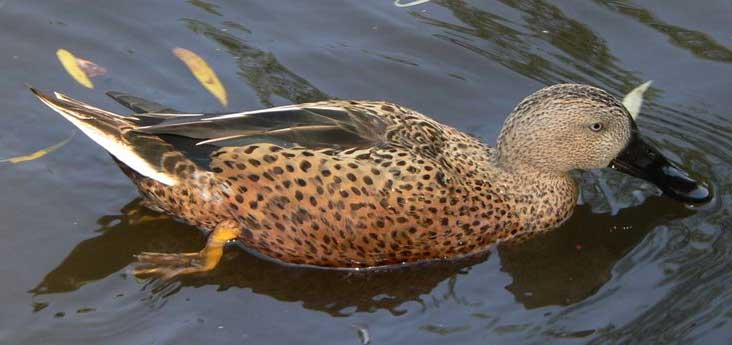
Spatula platalea (*)
Superregnum: Eukaryota
Cladus: Unikonta
Cladus: Opisthokonta
Cladus: Holozoa
Regnum: Animalia
Subregnum: Eumetazoa
Cladus: Bilateria
Cladus: Nephrozoa
Superphylum: Deuterostomia
Phylum: Chordata
Subphylum: Vertebrata
Infraphylum: Gnathostomata
Megaclassis: Osteichthyes
Cladus: Sarcopterygii
Cladus: Rhipidistia
Cladus: Tetrapodomorpha
Cladus: Eotetrapodiformes
Cladus: Elpistostegalia
Superclassis: Tetrapoda
Cladus: Reptiliomorpha
Cladus: Amniota
Classis: Reptilia
Cladus: Eureptilia
Cladus: Romeriida
Subclassis: Diapsida
Cladus: Sauria
Infraclassis: Archosauromorpha
Cladus: Crurotarsi
Divisio: Archosauria
Cladus: Avemetatarsalia
Cladus: Ornithodira
Subtaxon: Dinosauromorpha
Cladus: Dinosauriformes
Cladus: Dracohors
Cladus: Dinosauria
Ordo: Saurischia
Cladus: Eusaurischia
Subordo: Theropoda
Cladus: Neotheropoda
Cladus: Averostra
Cladus: Tetanurae
Cladus: Avetheropoda
Cladus: Coelurosauria
Cladus: Tyrannoraptora
Cladus: Maniraptoromorpha
Cladus: Maniraptoriformes
Cladus: Maniraptora
Cladus: Pennaraptora
Cladus: Paraves
Cladus: Eumaniraptora
Cladus: Avialae
Infraclassis: Aves
Cladus: Euavialae
Cladus: Avebrevicauda
Cladus: Pygostylia
Cladus: Ornithothoraces
Cladus: Ornithuromorpha
Cladus: Carinatae
Parvclassis: Neornithes
Cohors: Neognathae
Cladus: Pangalloanserae
Cladus: Galloanseres
Ordo: Anseriformes
Familia: Anatidae
Genus: Spatula
Species: Spatula platalea
Name
Spatula platalea (Vieillot, 1816)
Synonymy
Anas platalea (protonym)
References
Vieillot, L.J.P. 1816. Nouveau Dictionnaire d’Histoire naturelle, appliquée aux arts, à l'agriculture, à l'économie rurale et domestique, à la médecine, etc. Par une société de naturalistes et d'agriculteurs. Avec des figures tirées des trois règnes de la nature. Tome 5. 614 pp. + 9 tt. Déterville, Paris. BHL Reference page.
Vernacular names
català: Ànec cullerot sud-americà
čeština: Lžičák tečkovaný
Cymraeg: Hwyaden lydanbig De America
dansk: Sydamerikansk skeand
Deutsch: Fuchslöffelente
English: Red Shoveler
Esperanto: Spatelbeka anaso
español: Cuchara argentino
فارسی: نوکپهن سرخ
suomi: Argentiinanlapasorsa
français: Canard spatule
magyar: Argentin kanalasréce
italiano: Mestolone rosso
日本語: アカハシビロガモ
Plattdüütsch: Rode Slubbaante
Nederlands: Argentijnse slobeend
norsk: Prikkskjeand
polski: Płaskonos jasnogłowy
português: Marreca-colhereira
русский: Южноамериканская широконоска
svenska: Sydamerikansk skedand
Türkçe: Kızıl kaşıkgaga
Tiếng Việt: Vịt mỏ thìa đỏ
中文: 赤琵嘴鴨
The red shoveler (Spatula platalea) is a species of dabbling duck native to southern South America.
Description
The species has a spatula-shaped bill, a green speculum, and light blue upper wing converts.[2] Male shovelers vary in color from red to paler shades of red (and pink), while the females tend to have large, dark bills. Adults reach a size of about 45–56 centimetres (18–22 in), weigh about 523–608 grams (1.153–1.340 lb),[2] and have a wingspan of about 66–73 centimetres (26–29 in).[3]
Distribution and habitat
Resting at the Weltvogelpark Walsrode
The red shoveler breeds in the southern half of South America.[2][3] It ranges from Tierra del Fuego northwards to Chile and most parts of Argentina, as well as to the Falkland Islands, and there are small isolated breeding populations in southern Peru. It inhabits shallow lakes and pools with dense reed beds and marshes and can also be found in brackish waters, such as coastal lagoons and estuaries.[2]
Ecology
Anas platalea - MHNT
Red shovelers have a diet that includes herbs, grasses, pond weeds, widgeon grass, algae, and eelgrass. They also feed on small invertebrates. The bill is equipped with a lamellate filtering mechanism that allows the extraction of small items of food from the water. Pairs form in the wintering grounds, after often noisy courtship. Once a clutch of 7-8 eggs is laid, incubation lasts about 25–26 days, followed by 40–45 days of fledging.[3] Red shovelers are partially migratory, with the southernmost birds migrating north during the winter season.[4]
Conservation
The red shoveler is a relatively common and widespread species, and is not currently considered at risk. However, it may suffer to an extent from the degradation of its wetland habitats.[4] The species is classified as Least Concern on the IUCN Red List due to its extremely large range and apparently overall stable population. Unfortunately, the wetland habitats used for nesting by this species is under threat by problems such as eutrophication due to agriculture runoffs which causes a loss in aquatic plants making it difficult for the ducks to find food reliably much less build nests out of said aquatic/herbaceous plants along with grazing cattle trampling down nests and vegetation needed to hide the nests to begin with.[5] This means that despite their species being considered under the category of Least Concern, actual steps need to be taken towards the conservation of this species by both regular farmers and the wetland areas dedicated to conservation where they are supposedly protected from things like tourism, fishing, and hunting because we don't know their true numbers in the wild because this species is so spread out.[6][7]
References
BirdLife International. (2016). "Spatula platalea". IUCN Red List of Threatened Species. 2016: e.T22680240A92852309. doi:10.2305/IUCN.UK.2016-3.RLTS.T22680240A92852309.en. Retrieved 22 July 2021.
"Argentine Red Shoveler". Seaworld.org. Retrieved 2016-04-20.
"Red Shoveler". www.oiseaux-birds.com. Retrieved 2016-04-20.
"Red shoveler videos, photos and facts - Anas platalea". ARKive. Archived from the original on 2016-05-21. Retrieved 2016-04-21.
Quilodrán, C. S.; Pernollet, C. A.; Chávez, M. A.; Estades, C. F. (2013). "Nest-site selection and success of red shoveler (Anas platalea) in a wetland of central Chile". Waterbirds. 36 (1): 102–107. doi:10.1675/063.036.0102.
Romano, M.; Barberis, I.; Pagano, F.; Maidagan, J. (2005). "Seasonal and interannual variation in waterbird abundance and species composition in the Melincué saline lake, Argentina". European Journal of Wildlife Research. 51 (1): 1–13. doi:10.1007/s10344-005-0078-z.
Pescador, M.; Díaz, S.; Peris, S. (2012). "Abundances of waterbird species on lakes in Argentine Patagonia as a function of season, lake size and the presence of mink". Hydrobiologia. 697 (1): 111–125. doi:10.1007/s10750-012-1175-0.
Retrieved from "http://en.wikipedia.org/"
All text is available under the terms of the GNU Free Documentation License

